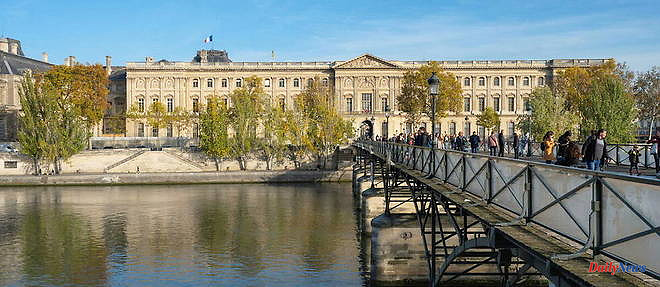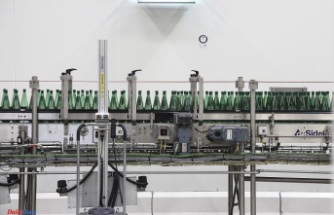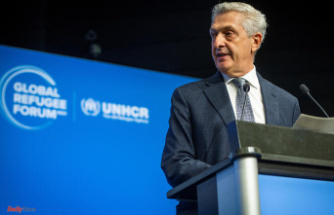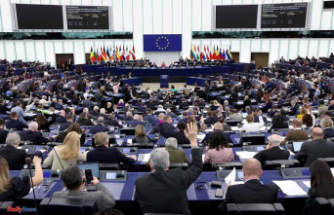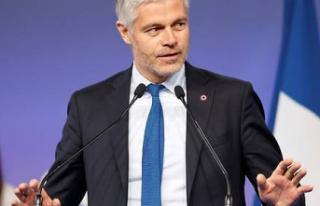With 300,000 trees, the metropolis of Lyon intends to make its "Nature plan" the most ambitious in France. It even supplants the city of Paris, which has committed to planting 170,000 trees by 2026. "Canopy", "greening" or "biodiversity" plans... Trees have become a symbol for communities, first for to "green" their image, but also to benefit from it.
Thanks to evapotranspiration, trees and shrubs help fight against heat islands, those urban areas whose temperature is significantly higher than that of rural areas. Temperature differences that can range from 2 degrees to 12 degrees depending on the region. By improving the quality of the air, by refreshing the ambient air by transpiration of cool water from the ground, from the roots to the leaves, these natural air conditioners are essential in the context of the announced summer heat waves.
"The ecosystem services of vegetation in the city participating in the improvement of the living conditions of city dwellers are no longer to be proven, recalled Philippe Clergeau during a recent conference of the Academy of Agriculture devoted to the subject. But France must catch up on research on urban forests and work on suitable species. The professor at the Natural History Museum recalls that "trees themselves undergo stressful conditions that threaten their survival or functioning".
According to a study published in September 2022 in the journal Nature Climate Change, by 2050, 71% of tree species would be at risk in major cities. Between 56 and 65% are believed to be already at risk, "either because temperatures in some cities are already above the upper limit tolerable by the species, or because current precipitation levels in some cities are already below the lower limit tolerable by the species. species,” explain its authors.
“Trees are currently living at the limit of what they can support and, with climate change, this limit is likely to be quickly exceeded, explains Bastien Castagneyrol, ecologist and research fellow at Inrae. We must move towards an acceptance of their vulnerability, because some will not be able to survive, which means anticipating strategies for the renewal of urban forests. More than a thousand species, including our ash, oak, poplar, elm, lime, chestnut and pine trees, are compromised. In France, the cities of Paris, Bordeaux, Montpellier, Grenoble and Lyon are particularly concerned. They are also among the most committed to revegetation.
In Montpellier, which has adopted a tree charter, the municipality opts for an in-between: the planting, in the city center, of large elms of 7 meters and of trees and shrubs of Mediterranean and local. At the same time, throughout the city, hundreds of plane trees were cut down because they were affected by canker stain. "The cumulative effect of de-sealing the soil, planting additional trees and increasing the presence of water should make it possible to reduce the temperature felt in the square by 2°C to 7°C. Comedy and the Esplanade," the town announced. Indispensable in one of the hottest cities in France.
This question of diversity is at the heart of the issues. "If we replace all the plane trees with hackberries, we will reproduce the same insect problem. The scattering of trees in the urban space would minimize the risks,” adds Bastien Castagneyrol. “We should be able to plant everywhere and not just in public spaces. A public-private balance to be found,” adds Frédéric Ségur.
In Paris, judged to be behind other major cities, "enrichment is to be considered," said Serge Muller, professor emeritus at the Museum of Natural History. As part of the project to create an urban forest in Place de Catalunya (14th arrondissement), he proposed creating a sub-Mediterranean type forest. "On the same principle could be created, in the capital and in other cities, on areas of a few thousand square meters, temperate forests of the American or Asian type, or even of the southern hemisphere, allowing the public to benefit , without moving, a first glimpse of the tree communities of these regions. »
Another advantage of a network: to allow equity in the distribution, no longer reserving, as in the 18th century, forests for "beautiful neighborhoods", and a connection between the trees themselves. Links have even been established today between tree health and human health. “The volatile compounds emitted by trees interact directly with components of the atmosphere. These molecules have an impact on nitrogen oxide or ozone depending on several parameters. Eucalyptus is very emitting,” explains the researcher.
“Urban agriculture, to combine business with pleasure, will perhaps mark the return of fruit trees, tomato plants, market gardening, projects the geographer. The tree will have a different place, less dense, but useful. According to the WHO, between 10 and 15 square meters of green space per capita are needed to ensure the health and well-being of city dwellers.

